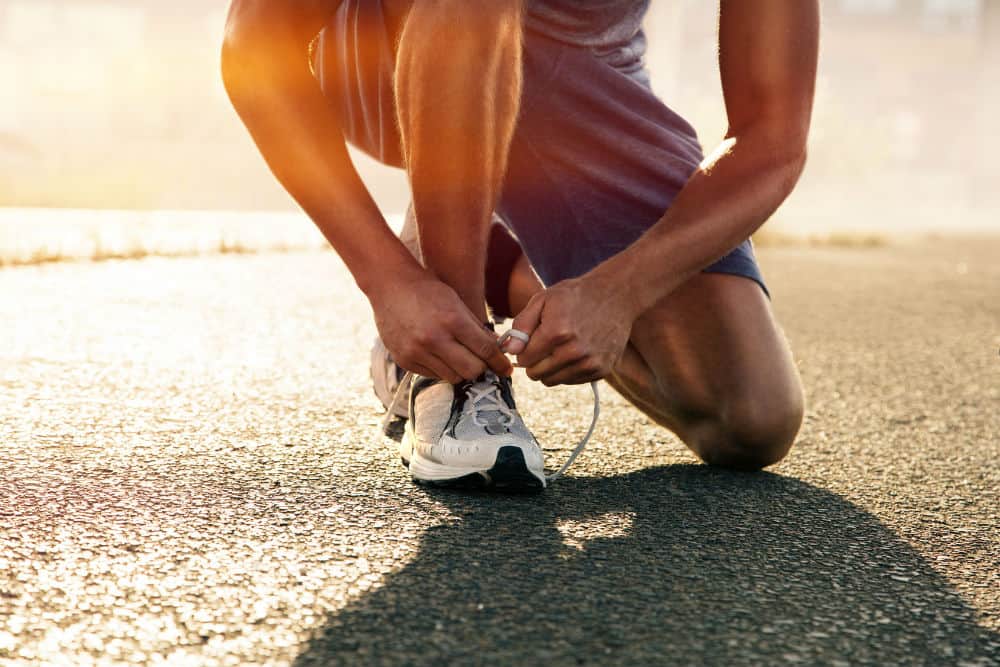Just because your helmet looks fine, doesn’t mean all those years of sweaty rides haven’t taken their toll on it. And like your favorite sneakers, your mountain bike helmet, too needs regular check-ups and maintenance, and sometimes a full replacement. But how often should you replace a bike helmet?
Well, fortunately, sometimes it will be obvious when to replace it. Like when the straps are beyond repair, there are major dents on the surface, etc. However, other times, you’ll notice minor bumps and just wonder if it’s still safe to ride with.
In this article, we will discuss the common wear and tear checklist in detail. And for those instances where we can salvage our favorite bike helmets, we will teach you some DIY repair skills.
Sounds interesting?
Read on.

What is The Lifetime of a Mountain Bike Helmet?
Most manufacturers have their helmets indicating a lifespan of 3 years. This still applies under normal wear and tear and very minor crushes. However, the actual life span will be determined by the condition of use. Do you wash it as recommended? Do you store it in a dry and cool place after use or do you leave it outside to get rained on at night and scorched by the midday sun? Irrespective, you are highly advised to replace your helmet after 3 years, even if it doesn’t show any signs of wear and tear.
So, what is wrong with exposing your helmet to harsh environmental conditions?
Take the sun for example, the continuous heat affects the mechanical composition of your helmet. You see, enclosed in the soft foam are metal components that give your helmet its structure. Some helmets also have fiberglass or hard plastic on the surface whose tensile strength reduces under high temperatures.
And obviously, Styrofoam breaks down under constant exposure to UV rays.
So, don’t leave your helmet in your car the entire day. Its like baking these elements in the oven gradually and eventually, they will give up without notice.
How Does A Crush Affect the Helmet?
The liner and EPS (foam) of the helmet are all designed to work harmoniously and cushion your head in the event of a crush or head impact. Unfortunately, once the foam compresses it doesn’t retract back. It’s a one-time affair, just like your car airbags.
Luckily, this compression only occurs when your head is the one that pushes the helmet. So, like when you just drop the helmet, the foam is not affected. The outer structure absorbs such impacts. However, each crush, small or major affects the hemi structure of the helmet. Eventually, all these impacts work towards rendering your Helmet unusable.
Statistics have proven that bike helmets indeed offer protection even in grave accidents. The catch is to have a good quality helmet, and always in good working condition. Read our details. Nevertheless, dispose of your helmet after 3 years or after a major impact that renders it unsafe.
Can You See the Exact Condition of Your Helmet After Crashing?
Yes, you can, thanks to modern technology. Your manufacturer or most local dealers can offer to generate an internal EPS report. This is more like a Human Body X-ray but specifically done on helmets. It generates a clear image of the internal helmet condition so you can decide whether to continue using the helmet or trash it.
Other times, you just need to use your eyes to spot cracks and foam indents.
Now What Do I Do With An Old Helmet?
For vintage collectors, that’s for keepsakes. In another century it will be worth more than diamonds. Ha ha ha… Seriously though, you need to dispose of your helmet in a way that doesn’t encourage other users to pick it up and reuse it thereby endangering their lives.
Secondly, all bike helmet manufacturers take their old helmets back for recycling. And this, is the best way of disposing of old helmets without leaving any carbon footprint on our environment.
And How Do I Deal with Minor Bike Helmet Scratches?
I promised you some DIY, right? It’s about time.
Please note that this is for minor surface scratches. These don’t affect the usability or the safety score of your helmet in any way. For major cracks, visit professional repair centers or just buy a new helmet.
Now with minor scratches, you just need 2 easy steps to restore your helmet to an almost new condition. We first sand with regular sandpaper. You don’t want to get in too deep so manual sanding is your best bet. After you even out those scratches, clean the helmet with soap and water and let it dry for the next step to work.
Next, apply a paint primer. Your local hardware will advise on the best brand based on the material of your helmet surface.
Finally, we spray paint. You can get creative with this step or even scribble your logo. It’s DIY after all; what can go wrong?

Preventive Maintenance and Care Tips for Mountain Bike Helmets
Regular Cleaning Routine
We tend to normally clean the exterior of our helmets and ignore the sweaty padded interior. Over time, the salt and grease from our sweat start to degrade the fabric and material inside. A good cleaning routine involves thoroughly cleaning the interior as well. At least once a week is excellent.
Using warm soapy water, scrub the inside with a soft brush. However, don’t use any petroleum-based soap. If your manufacturer included detailed cleaning instructions, please follow them to the tee to avoid voiding your warranty.
Finally, clean the surface with a cloth and give the helmet a thorough rinse. Dry in an airy place but sheltered from direct sun. You shouldn’t also use a microwave, hair dryer or any heat-generating gadget to hasten the process. Let your helmet dry naturally.
Polishing
After the helmet dries, it’s time to polish the exterior with a wax-based polish. This protects the surface from the scorching sun rays and minor scratches from say tree branches when you ride off track.
Long Term Storage
If you’re not planning on cycling anytime soon, you need to prep your helmet for long-term storage. Of key importance are moisture and heat management. These 2 will damage you helmet faster than you could restore it. Today we have tiny moisture-wicking bags, like the ones your shoes come with. Toss in 2-3 sachets depending on how long you plan to store the helmet. These also take care of the foul smell that comes off long stored used clothing.
For the heat, make sure your choice of storage has sufficient air circulation. Proper ventilation takes care of heat build-up.
People Also Ask:
-
What is the age limit for bike helmets?
Different countries have different laws regarding the use of Bike Helmets. In the United States, for example, any person under the age of 16-18 years must wear a bike helmet in most states or otherwise face legal consequences.
That said, as an adult, you have better judgment in situations where a bike helmet could save your life. Moreover, it doesn’t cost much to always wear your bike helmet, and assume that you’re the only sobber motorist on the road.
-
Do I need a new bike helmet after a crash?
This depends on the magnitude of the crash and how severely your helmet was impacted. As discussed above, unless you fall down and land on your head which means your head is squeezing against the helmet, the foam will be OK. In this case you only need to check for major cracks on the outer layer. However, if you fall and your head is squeezing the helmet for support, the foam layer will be completely compressed and therefore, you must replace that helmet.
The Bottom Line
Statistics have proven that bike helmets indeed offer protection even in grave accidents. The catch is to have a good quality helmet, and always in good working condition. Read our detailed review on good quality bike helmets here. Nevertheless, dispose of your helmet after 3 years or after a major impact that renders it unsafe.














Hi There, Thank you for posting this article with so much information. I actually was not aware that you have to and when to replace your helmet. This is very good to know, as we put the helmets on in the first place to protect ourselves.
Also, the protective maintenance and care tips are very useful. In addition, thank you for providing a review for 5 best mountain bike helmets. You did the work for me when it’s time to replace my helmet.
Hello, Anna, and thank you.
Thank you for your kind words.
Great to hear about your benefit of the article too.
Don’t hesitate to contact me if I can help you with anything else or if you have any questions.
Hi, first, I want to thank you for this article, and I will share it with my husband. He uses a bike helmet and must know all these helpful tips and tricks about maintenance, polish, and long storage. I learned a lot from reading your article, and I will follow your instructions anytime that I will clean my husband’s bike helmet.
Have a good day.
Alketa
Hello, Alketa, and thank you.
Thank you for your kind words.
Great to hear about your benefit of the article too.
Don’t hesitate to contact me if I can help you with anything else or if you have any questions.